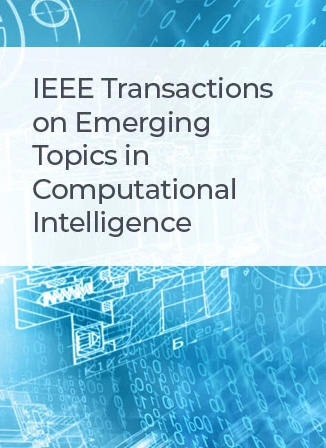A Novel Attention-Based Dynamic Multi-Graph Spatial-Temporal Graph Neural Network Model for Traffic Prediction
IF 5.3
3区 计算机科学
Q1 COMPUTER SCIENCE, ARTIFICIAL INTELLIGENCE
IEEE Transactions on Emerging Topics in Computational Intelligence
Pub Date : 2024-10-14
DOI:10.1109/TETCI.2024.3462513
引用次数: 0
Abstract
Traffic flow prediction is a non-negligible part of intelligent transportation and mobility. Unfortunately, the unique non-linearity and complex spatial-ST-correlation of transport flow data suggest considerable challenges in prediction. The dynamic interaction of multiple spatial relations greatly influences traffic flow prediction. However, the existing spatial-temporal prediction algorithms are based on graph convolution to capture global or heterogeneous relationships, and simpler graph convolution models cannot accurately capture complex dynamic spatial relationships. To address the issues as mentioned above, this study proposes an attention-based multi-graph dynamic spatial-temporal prediction model ADMSTGCN to capture a variety of dynamic interaction relationships in traffic flow. First, we use a distance graph to explore the relationships between adjacent distances and use a semantic graph to mine spatial relationships between nodes that are far apart but have similar relationships, then fuse these two graphs to obtain a fusion graph with multiple spatial interaction relationships. The correlations between different neighbors are then further learned through a dynamic multi-graph spatial-temporal learning module that aggregates the features of different neighbors through gated graph convolution and attention mechanisms to capture various dynamic and complex spatial-temporal interactions. Experimental evaluations show that the framework proposed outperforms existing methods with better results in the analysis performed with publicly available datasets and also demonstrates the importance of capturing multiple interactions of spatial-temporal relationships.一种基于注意力的动态多图时空图神经网络交通预测模型
交通流预测是智能交通和智能出行不可忽视的一部分。不幸的是,输送流数据独特的非线性和复杂的空间- st相关性给预测带来了相当大的挑战。多种空间关系的动态交互作用对交通流预测影响很大。然而,现有的时空预测算法是基于图卷积来捕获全局或异构关系,简单的图卷积模型无法准确捕获复杂的动态空间关系。针对上述问题,本研究提出了一种基于注意力的多图动态时空预测模型ADMSTGCN,以捕捉交通流中各种动态交互关系。首先,利用距离图探索相邻距离之间的关系,利用语义图挖掘相距较远但关系相似的节点之间的空间关系,然后将这两个图融合,得到具有多个空间交互关系的融合图。然后通过动态多图时空学习模块进一步学习不同邻居之间的相关性,该模块通过门控图卷积和注意机制聚合不同邻居的特征,以捕获各种动态和复杂的时空相互作用。实验评估表明,所提出的框架优于现有的方法,在对公开可用的数据集进行分析时取得了更好的结果,并且还证明了捕获时空关系的多重交互的重要性。
本文章由计算机程序翻译,如有差异,请以英文原文为准。
求助全文
约1分钟内获得全文
求助全文
来源期刊

IEEE Transactions on Emerging Topics in Computational Intelligence
Mathematics-Control and Optimization
CiteScore
10.30
自引率
7.50%
发文量
147
期刊介绍:
The IEEE Transactions on Emerging Topics in Computational Intelligence (TETCI) publishes original articles on emerging aspects of computational intelligence, including theory, applications, and surveys.
TETCI is an electronics only publication. TETCI publishes six issues per year.
Authors are encouraged to submit manuscripts in any emerging topic in computational intelligence, especially nature-inspired computing topics not covered by other IEEE Computational Intelligence Society journals. A few such illustrative examples are glial cell networks, computational neuroscience, Brain Computer Interface, ambient intelligence, non-fuzzy computing with words, artificial life, cultural learning, artificial endocrine networks, social reasoning, artificial hormone networks, computational intelligence for the IoT and Smart-X technologies.
 求助内容:
求助内容: 应助结果提醒方式:
应助结果提醒方式:


